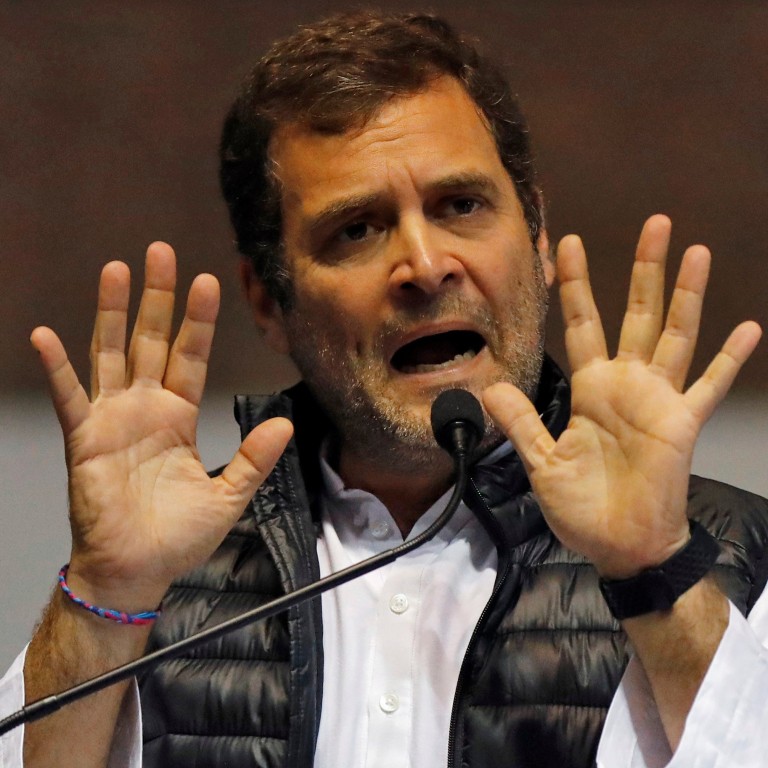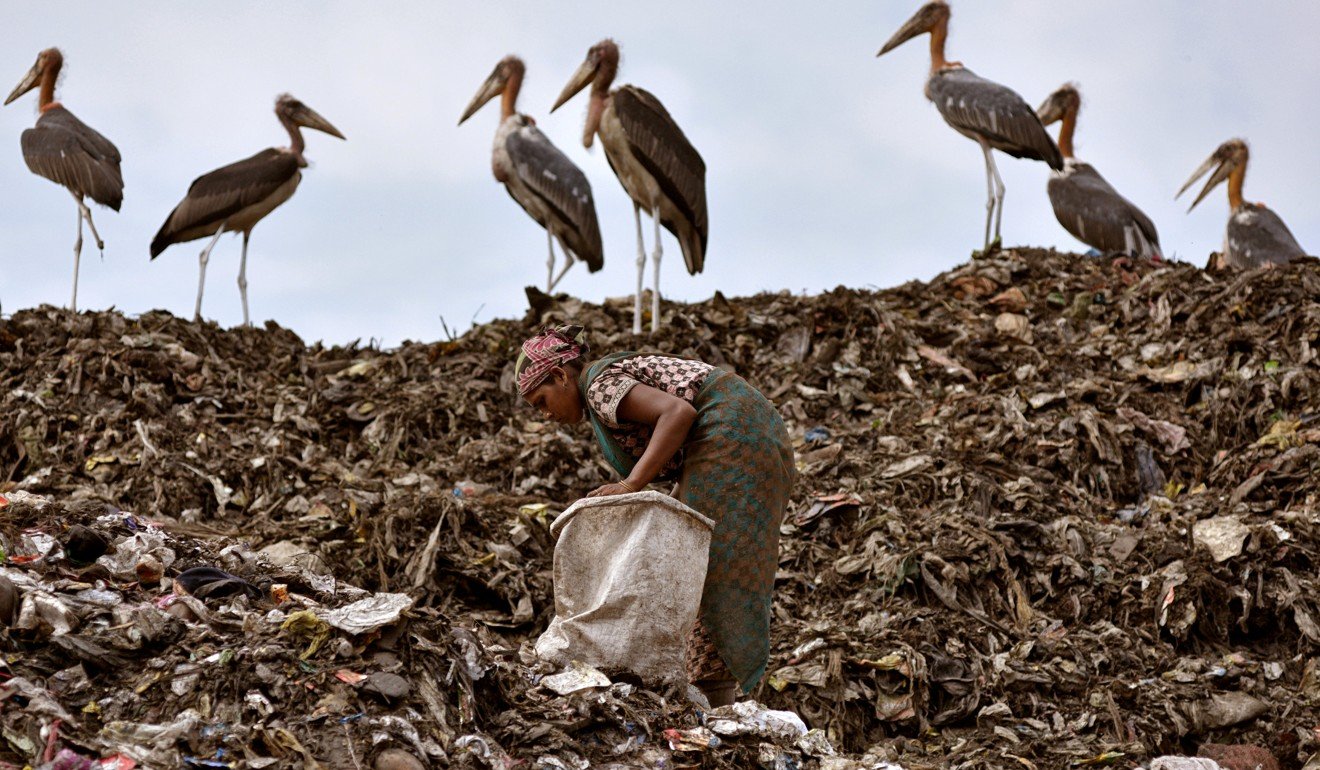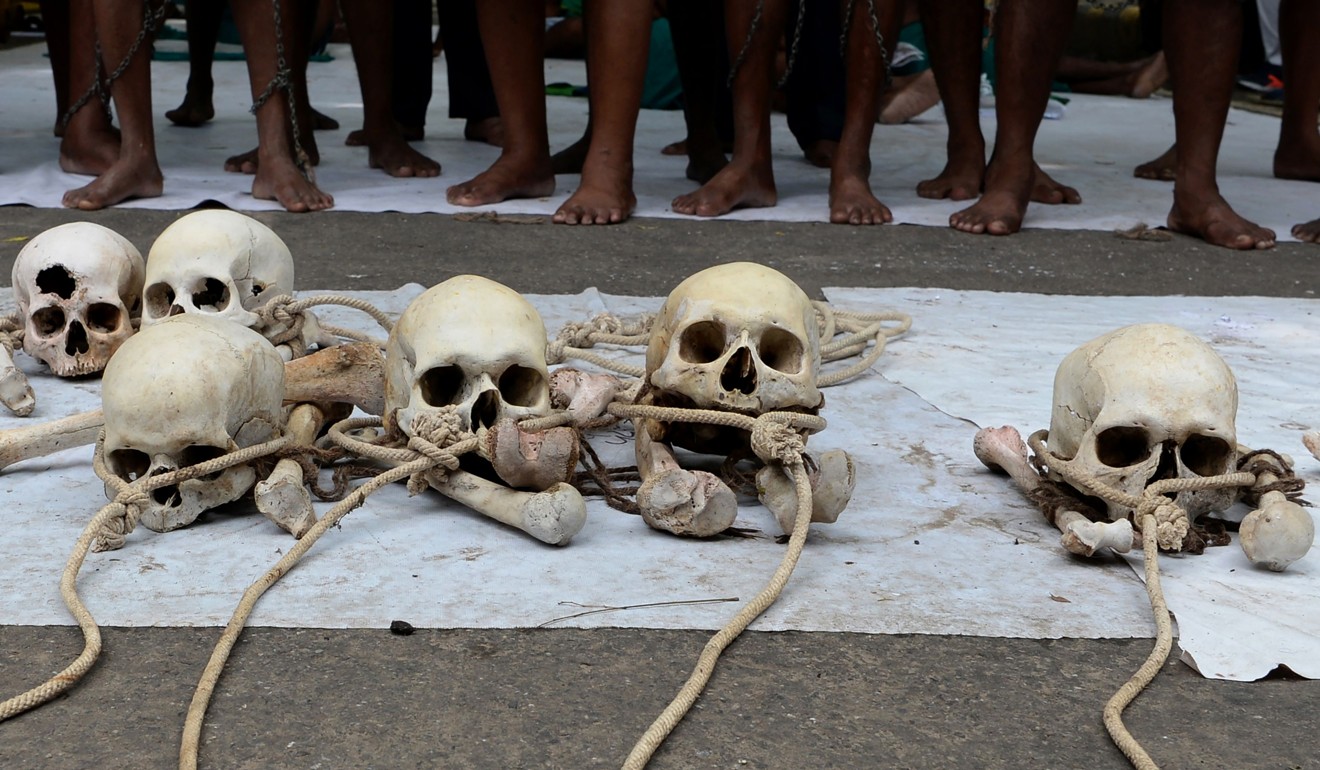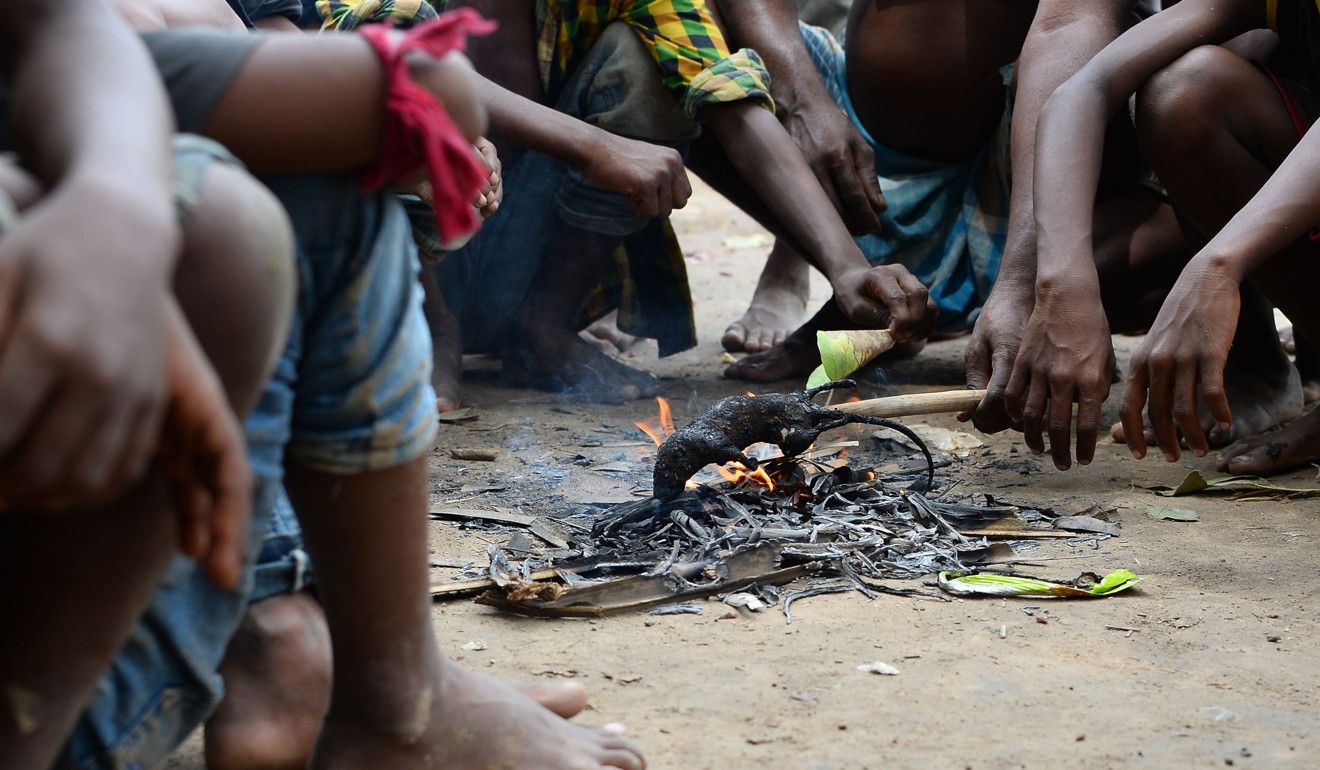
Rahul Gandhi’s plans to end Indian poverty work economically, just not politically
- The Congress leader wants to introduce a ‘quasi-universal basic rural income’
- The figures add up, but a very vocal minority stands to lose
In recent weeks, each has rolled out plans to ramp up public welfare spending on the country’s rural poor. But while some of these are simply the same old failed policies warmed up and worked over, others are remarkably innovative – and make sound economic sense.
But the government’s budget looked stale and unimaginative next to proposals from Congress leader Rahul Gandhi, who promised nothing less than to end hunger and poverty by introducing a government-funded universal basic income for the country’s rural poor.

The problem India’s politicians face is that two-thirds of the country’s voters – and of its electorate – live in the countryside, where incomes are not only half those in its cities, they are far more precarious. In a lean year with a poor monsoon, crops fail and farmers’ incomes suffer. In a fat year with a good monsoon, the superabundance of crops hammers prices – and farmers’ incomes suffer. And when farmers’ incomes suffer, the entire rural economy suffers.
In the past, India’s central and state governments have sought to ease the pressure with cash handouts, loan waivers and subsidies for farmers. In essence, the welfare measures proposed by the government this month are an extension of these policies. And they suffer the same drawbacks.
The government’s cash handouts are linked to land ownership. This means bigger landowners, who are less in need of income support, get the bulk of the payments. Meanwhile, the countryside’s poorest, landless labourers, get nothing. And because payments are dependent on establishing land title, they are enormously expensive to administer.
Sorry guys, even in China, there’s no magic money tree
Similarly, loan waivers only benefit farmers big and sophisticated enough to borrow through official schemes. They don’t help the poorest in hock to the village moneylender.
Subsidies for seeds, fertiliser and energy suffer similar problems. According to the International Monetary Fund, for every 100 rupees (US$1.40) spent on the scheme, only 64 rupees actually reach India’s farmers, with the rest lost to administrative costs and corruption. And even then, it is the richest farmers who buy the most seeds and fertiliser and use the most energy, that benefit the most.
The plan proposed by the opposition Congress – and incidentally, originally devised by the government’s former special economic adviser – attempts to overcome these problems.

It is a version of the “universal basic income” so beloved by rich world social democrats. The idea is for the government to pay a minimum guaranteed income to all but the richest of India’s rural households, in what its backers are calling a “quasi-universal basic rural income”, or QUBRI for short.
Doling out free money to almost everyone – three-quarters of households is the number usually mentioned – might sound crazy. But enthusiasts say the scheme has several important advantages over existing welfare programmes.
First, because the payments go to all the rural poor, the bulk of the money automatically goes to those who need it most, rather than to those who need it least – like landed farmers or the rich households which consume the most electricity.
The truth about China’s surplus? There isn’t one
Second, it is relatively cheap and easy to administer. Unlike existing schemes, QUBRI would be paid to everyone, except for the minority who are excluded. Payments would be made via the existing Aadhaar system, which already covers more than 90 per cent of the population. And establishing who should be excluded is much simpler than determining who should be included.
For example, the authorities can simply exclude government employees, income tax payers, credit card holders and large land owners. Together with a couple of other relatively easy to determine criteria, this would exclude the desired richest quarter of the rural population.
Third, the plan is remarkably affordable. According to former government adviser Arvind Subramanian and his colleagues, a scheme which paid 18,000 rupees (US$257) a year to the poorest three-quarters of rural households – some 180 million families – would cost a modest 1.3 per cent of India’s gross domestic product.

And while 18,000 rupees might not sound much to the inhabitants of Asia’s more prosperous economies, it is enough to pay for a third of all consumption by the poorest 40 per cent of Indian households. That would amount to a major relief of poverty.
Of course, additional spending totalling 1.3 per cent of GDP would be no small matter in an economy already running a consolidated budget deficit of around 8-10 per cent of GDP.
But QUBRI’s backers claim that the scheme is intended to replace, rather than augment, the majority of the government’s existing 950 welfare programmes. As a result, the plan could pay for itself. Simply replacing inefficient energy subsidies would cover much of the costs.
Look to US, not China for 2019 financial crisis. Here’s why
This is where QUBRI falls down. The problem isn’t economic – the plan makes excellent economic sense. Rather, the obstacle is political. QUBRI would provide important welfare benefits to many. However, it would deprive a small but highly influential constituency of entrenched interests – notably, larger landowners and corrupt officials – of the lucrative gains they make under the existing, inefficient system.
It is a sad fact of political life that the views of a small but vocal minority who stand to lose a lot from reform tend to count more than the voices of the majority, each of whom stands to gain a little – even if the aggregate gain far outweighs their combined loss.
As a result, even if it becomes official policy, India’s innovative QUBRI is likely to fail in the implementation. The poor, it seems, will always be with us.
Tom Holland is a former SCMP staffer who has been writing about Asian affairs for more than 25 years

